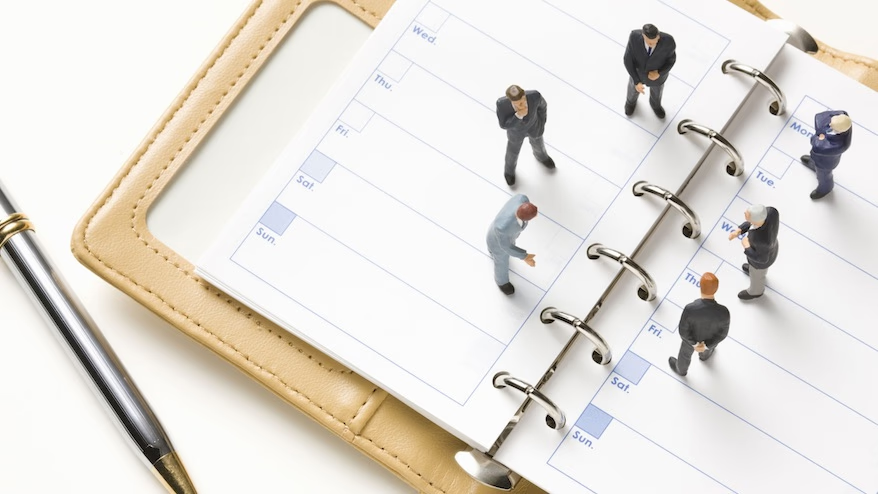Hello, I'm Director Oyabuchi.
We have worked on the renewal of many different websites in the past, but sometimes, with the launch date right around the corner, we can't keep up and all the team members start to get anxious (=get angry).
How can we make steady progress until release? We divided the entire project into two phases, the "early stage" and the "middle to late stage," to consider the points to keep in mind during production. In the " early stage" section introduced last time, we talked about what should be done in the first half of the project.
Five things to do in the early stages of a project
1. Share requirements and proposal details in a pre-planning internal meeting (make sure everyone involved in the project is on the same page)
2. Create a site map (assign a status to each page to visualize production volume)
3. List of issues (Identify all issues that may arise from the start of the project to launch)
4. Create a schedule (put the tasks you have identified into an inventory into a realistic schedule)
5. Create an issue management table (to share and update issues between the client and the production team)
This time, I would like to talk about what is important when progressing a project from the middle to the end stages.
It's important to always go with the flow!
Four important meetings from the mid-game onwards

Basically, there is no problem if you proceed according to the preparations you made at the beginning, but some projects last for a long time, and the members' conditions are not always perfect. With various factors involved, it can be quite difficult to maintain the same level of concentration from start to finish.
From the middle of a project, it is important to be conscious of and respond in a way that allows you to make steady progress with the preparations you made at the beginning. That is why I hold detailed meetings.
Broadly speaking, there are four types of meetings that I try not to miss.
1. Check your schedule individually (daily)
As we move into the latter half of a project, the number of detailed actions that need to be taken each day increases, and so does the number of people involved. As the director who oversees the whole project, I check what needs to be done that day, and check the progress of each person in charge while giving them a call. It's important to be aware of the need to make sure we're moving forward day by day.
2. Regular meetings with clients (once a week)
Regular meetings with clients are generally held once a week, but depending on the volume of proposals, they may be held several times a week. The meetings are mainly used to propose and confirm the work to be produced. If necessary, planners, designers, and coders are also invited to participate, and any decisions that can be made on the spot are made.
Clients are busy and the production side wants to concentrate on their work, so meetings should be held as close together as possible. It is also important to decide the contents of the meeting in advance so that nothing is missed. (Keep the discussion short and focus on what needs to be discussed now. Time is wasted on pointless conversations.)
I also present the schedule and task management sheet at each meeting and share the progress. At the same time, I check the client's tasks, understand which are high priority and which are delayed, and try to decide on the spot how to proceed and whether rescheduling is necessary.
By holding regular weekly meetings, the client and the production team can share the same vision and proceed as a team until publication.
3. Regular internal team meetings (once a week)
This is a regular internal meeting attended by all production members involved in the project. This is also held once a week. By checking each person's progress, issues that each person had not noticed come to light and can often be resolved on the spot.
Because everyone is involved, when confirming how to proceed, the people in charge of the previous and next processes can talk with each other, which makes it possible to quickly adjust schedules and so on.
You might think that people who have completed the production phase don't need to participate, but depending on the issue and the flow of the discussion, good solutions often come out when all members think together. For this reason, we ask people who are not directly involved in the current phase to participate as well.
4. Regular meetings with the main members at the time (each time)
In addition to the regular meetings in which everyone participates, we also hold regular meetings with the main members who are currently working on the project. This is because in-house team regular meetings, we need to discuss the project as a whole, and often cannot cover detailed discussions such as coding.
In particular, individual meetings with coders and designers, who require close cooperation, are important. As the project approaches the latter half, unexpected corrections often come up and we are required to work quickly, so we try to hold frequent meetings so that we can respond to each issue as it arises.
We have explained how to proceed with a project in two parts: "The early stages" and "The middle to late stages."
First of all, the most important thing is preparation in the early stages. It may be okay to spend too much time on that. It is important to make sure that nothing is left unclear at the start of the project, and that there is no misunderstanding between members. Lack of preparation in this area will have a big impact later on.
Also, in the middle to late stages, it's important to be conscious of "always going with the flow of the project" without letting your guard down. (Ideally, you should feel like you're having fun being in the flow.) It's also the director's role to keep all the members in the flow, so if the flow breaks down or stops, the first priority is to focus on getting it back on track.
And the director himself must not become discouraged.
The director stands between the production side and the client and is at the heart of the project, so if the director is not able to cope with the project, the project cannot move forward.
I myself still have a lot of trial and error to do, but I want to make sure I don't ignite the project. Rather, I want to have enough time to suggest something extra before the release.

